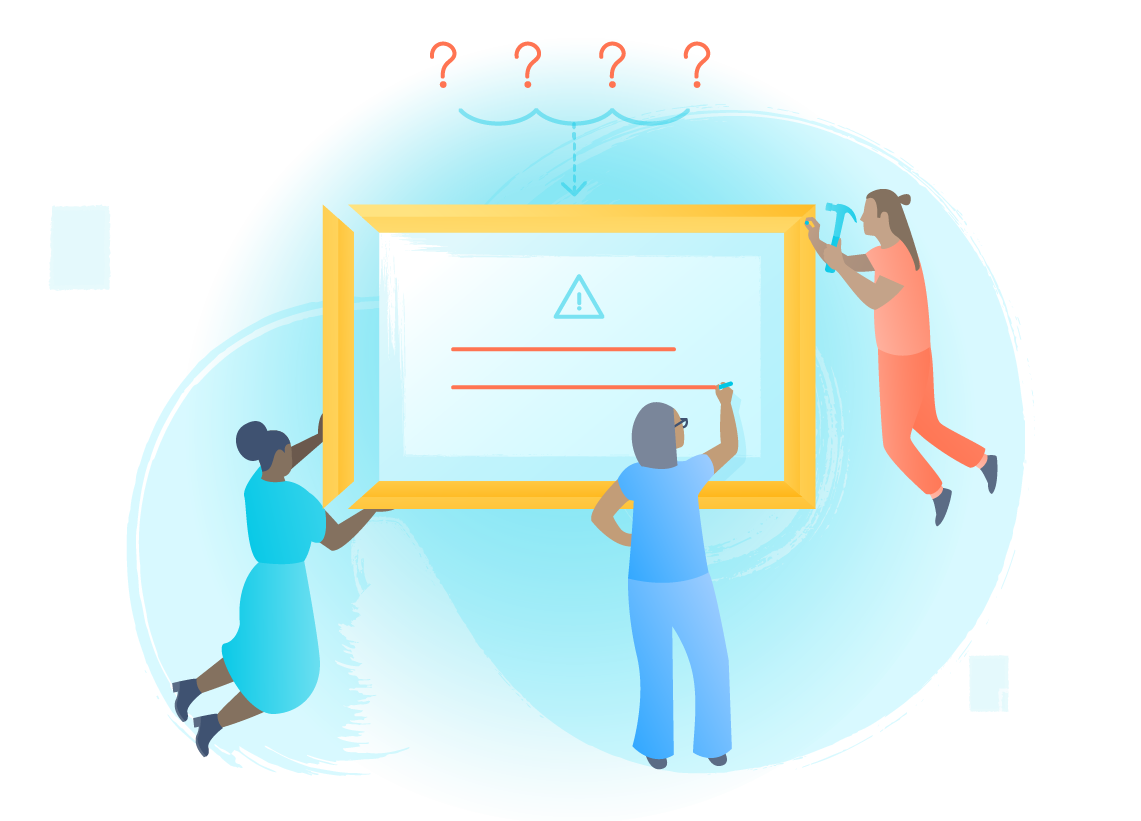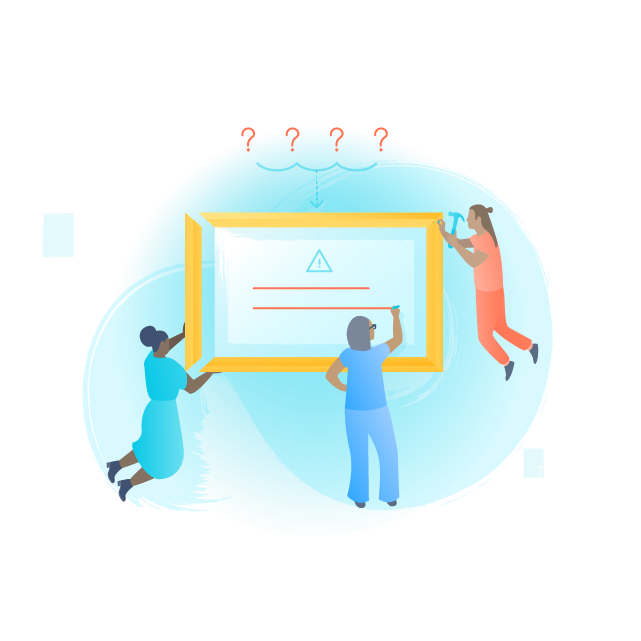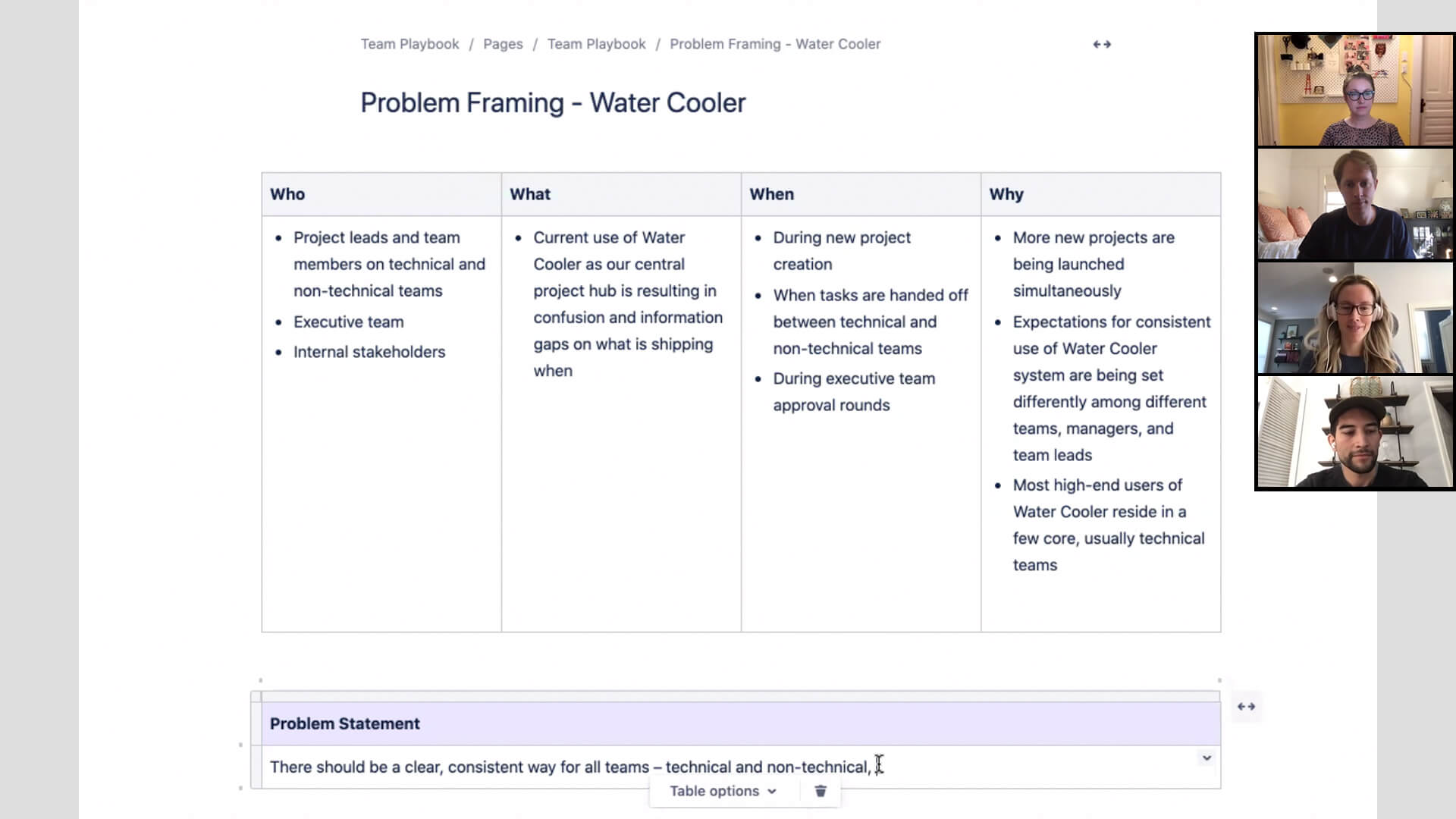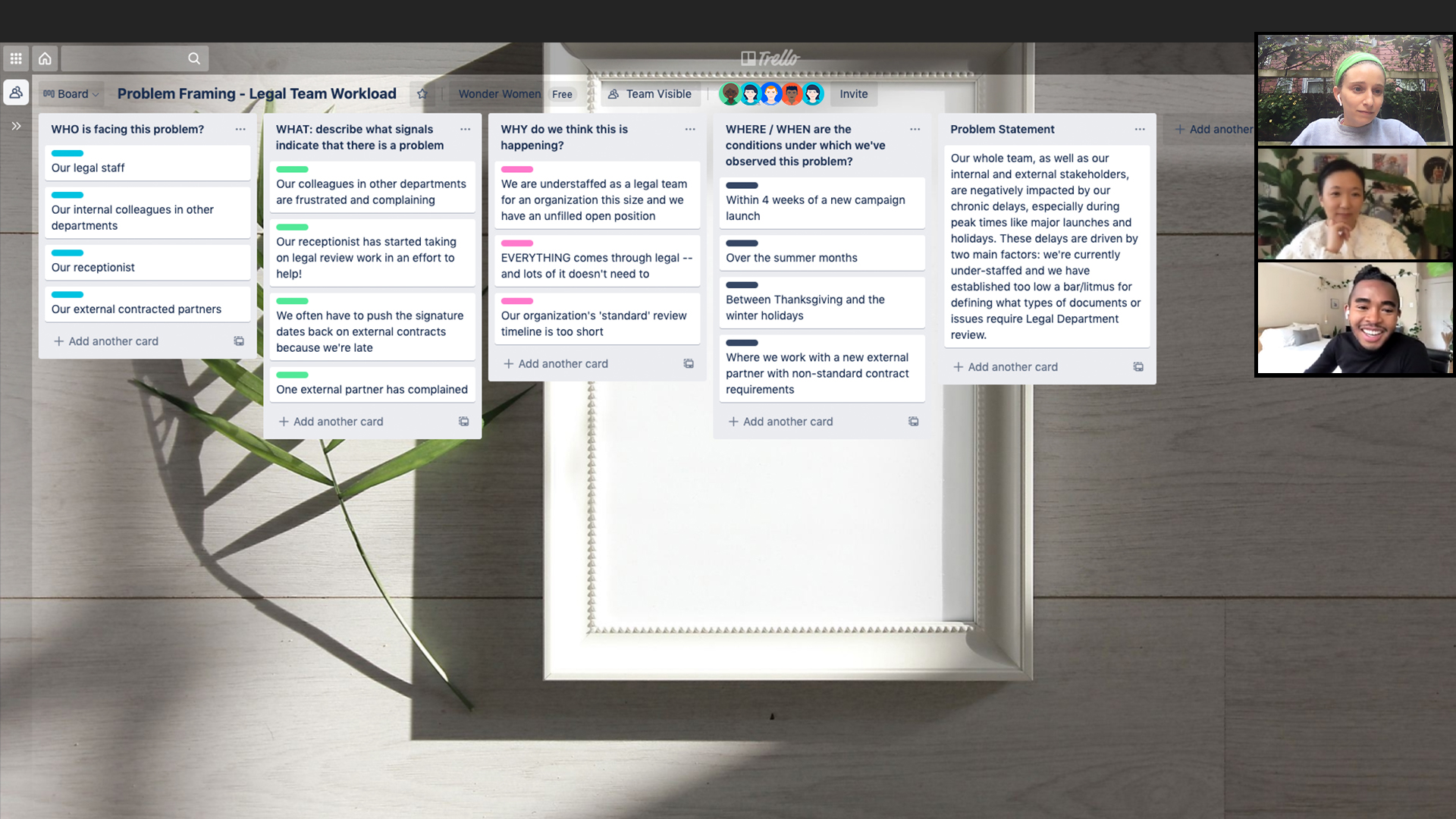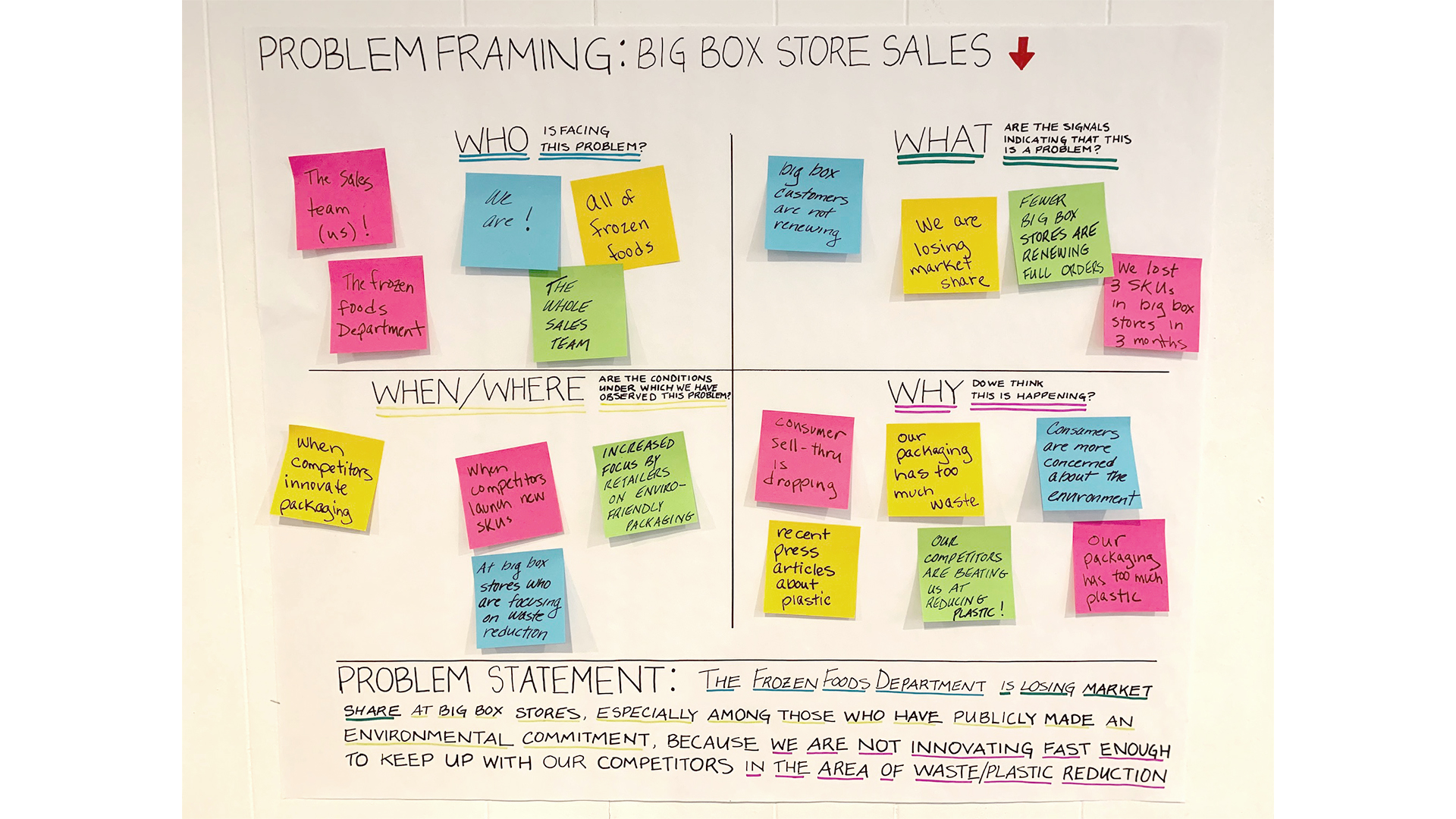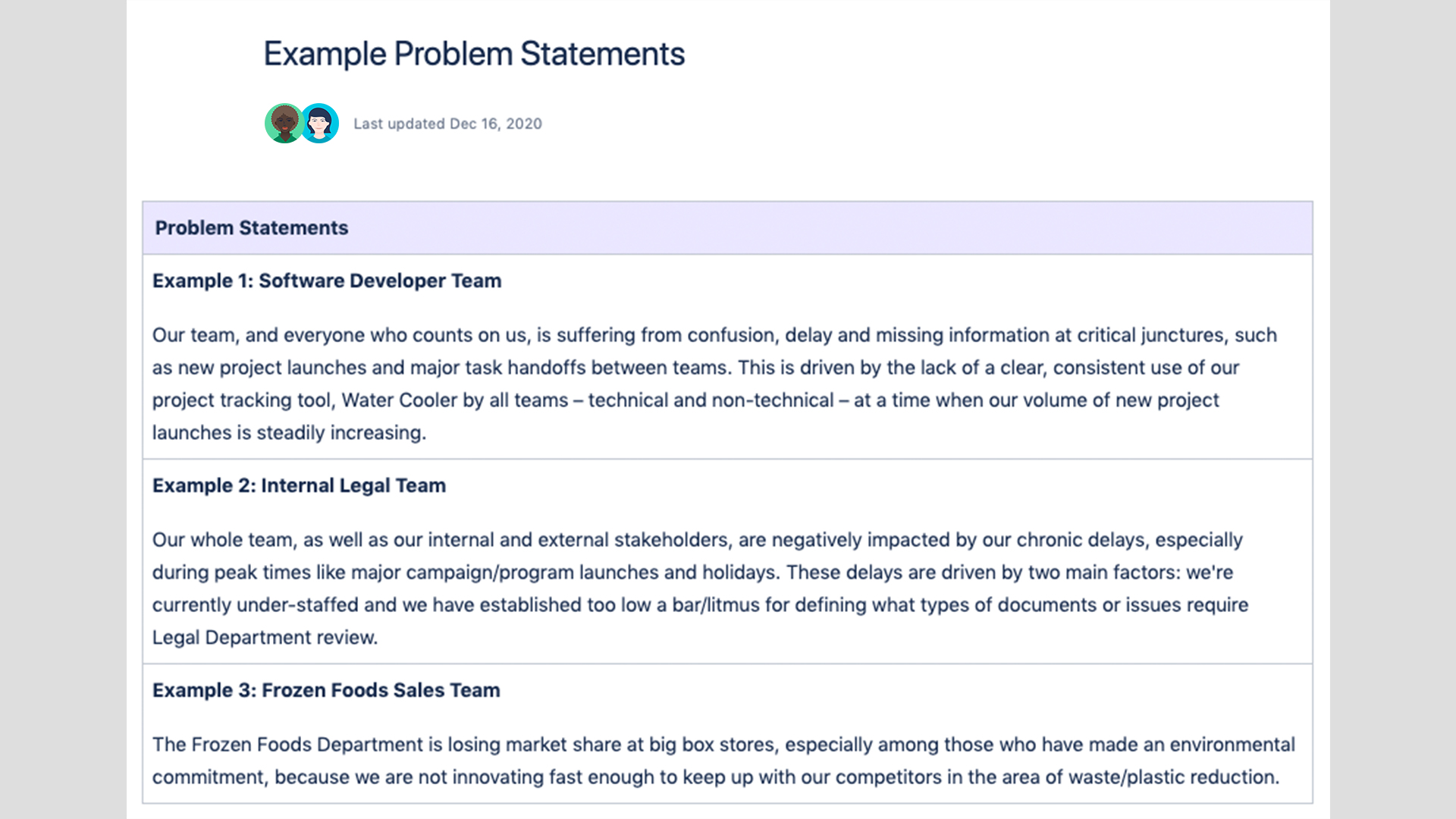Problem Framing in action
These software developers use Confluence to work through the problem statement at the end of the Play.
This in-house legal team uses Problem Framing to understand the issue driving their overdue workload.
A sales team used the Problem Framing Play to clarify their challenge with performance in big box stores.
What you'll need
Remote
Video conferencing with screen sharing
Digital collaboration tool (see templates)
In-Person
Whiteboard
Sticky notes
Markers
Timer
Optional templates
Atlassian Templates
Instructions for running this Play
1. Prep 5 MIN
For remote teams, create a collaboration document using one of the templates above if you’d like. Share the document in advance with your team.
For in-person teams, book a room and prepare sticky notes and markers. Divide the whiteboard into four quadrants: who, what, why, where.
Send any relevant supporting data you have in advance to the team.
Tip: YOUR CUSTOMERS’ SHOES
If the problem is around your customers, prepare the team by gathering and sending them as much relevant customer information as possible.
2. Set the stage 2 MIN
Let your team know that the goal today is to understand and define the problem, not to solve it.
3. Brainstorm 10 MIN
Ask the team to take a step back and think about the problem as a whole from the perspective of the people affected by it.
Set a timer for 10 minutes for the team to add their ideas to the collaboration document or on sticky notes to the whiteboard.
Tip: WHO
Who is experiencing this problem? How do we know that they are experiencing it? What feedback have we received from them on it?
Tip: WHAT
What is the nature of the problem? What signs point to there being a problem?
Tip: WHY
Why is the problem worth solving? What's the impact on the people experiencing the problem? What happens if we don’t solve it?
Tip: WHERE
In what circumstances is this problem occurring? In what circumstances does it not occur?
4. State the problem 10 MIN
Using the ideas generated by the team, craft one concise problem statement that sums up the issue from the customer’s perspective.
The problem statement should include who is affected, what is affecting them, why it needs to be solved, and where the problem is happening.
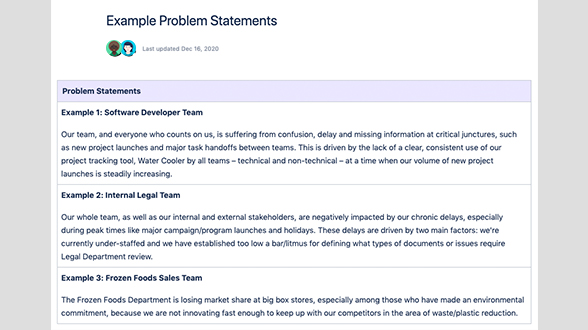
EXAMPLE: FINAL STATEMENTS
Here are some problem statements that various teams formed at the end of running the Problem Framing play.
Follow-up
Make it visible
Post your problem statement somewhere highly visible to the team - in your online space or in your physical workspace. This will keep the problem at the top of everyone’s mind.
Next steps
Now that you’ve clearly defined the problem, assemble the appropriate team members together to create a plan for solving it. Running a Disruptive Brainstorming Play to generate ideas is a good place to start.
Variations
Craft a customer
If the people affected by your problem are your customers, have each team member build a persona for a customer prior to the session. During the session, have them embody that persona and explain the problem as that customer.
Explore other Plays
Stay up to date
Get the latest Plays and work life advice when you sign up for our newsletter.
